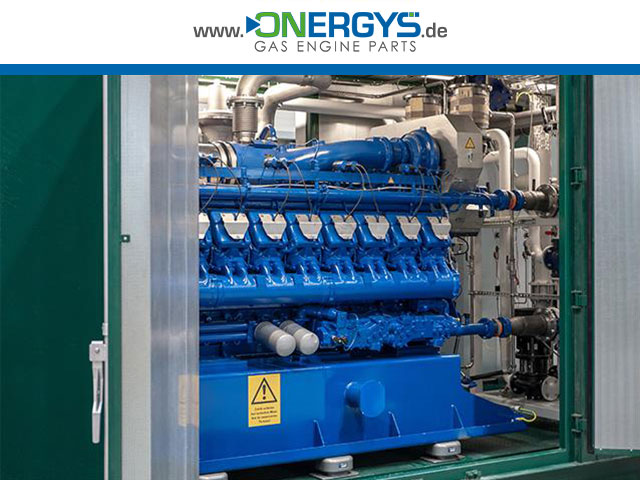

 A CHP (combined heat and power) unit differs from other power units because it is based on the principle of combined heat and power (CHP). In a CHP unit, mechanical energy and usable heat are obtained simultaneously in a thermodynamic process, and the mechanical power is usually immediately converted into electrical power.
A CHP (combined heat and power) unit differs from other power units because it is based on the principle of combined heat and power (CHP). In a CHP unit, mechanical energy and usable heat are obtained simultaneously in a thermodynamic process, and the mechanical power is usually immediately converted into electrical power.
The combined heat and power unit basically consists of three main components: Generator, heat exchanger and an engine. The way it works is similar to that of a car engine. In contrast to a car, the CHP unit operates a generator to produce electricity. In the process, the selected fuel is burned. The resulting waste heat is captured by the heat exchanger and transferred to drinking and heating water.

The principle - to couple electrical energy and thermal energy - is extremely sensible. This principle is also the basis for the functioning of the CHP unit. However, in a CHP unit, the various components are combined in one block. The mode of operation of a CHP unit is designed to avoid line losses thus saving costs. This is to be realized by the fact that CHP units produce where both heat and electricity are needed. With CHP units, eficiencies of up to 90% can be achieved with CHP units; in contrast, conventional power generators can often only utilize 40% of the energy stored in the fuel.

In the case of grid-connected CHP units, the individual plant is controlled centrally, for example by the energy supplier. Grid-connected units then form a so-called virtual power plant, i.e. a combination of different power generation units. These are then switched on and off as required.
The control variable in electricity-oriented operation remains the heat demand. The CHP unit runs when electricity is needed; if the heat generated is not used directly, the heat storage unit is used to buffer it for later use. The heat demand is primarily served from the heat storage, and only then does the CHP unit goes into operation.
Combined heat and power plants that are heat-led are geared to the heat base load or the peak demand of a building. This type of operation is often used in residential and commercial buildings. Since the differences in heat demand during the day do not fluctuate as much as in the case of electricity demand, the heat-led design therefore makes sense.

A combined heat and power unit operating in parallel with the grid feeds electricity directly into the public grid. In Germany, the grid operators are obligated to purchase electricity generated by a private CHP unit and to pay fixed prices per kWh.
As the name suggests, a CHP unit operating in stand-alone mode generates energy completely independently; due to the local conditions, a connection to the public power grid is not feasible. Combined heat and power plants in stand-alone operation are often combined with a photovoltaic system, a solar thermal system and a battery.
The operation of combined heat and power units is very efficient thanks to, among other things, the combined heat and power generation and the high degree of efficiency. By using suitable fuels, few pollutants are emitted with a good degree of utilization, which makes CHP units very environmentally friendly. In addition, the use of CHP in Germany is generally subsidized by the Combined Heat and Power Act (KWKG) and companies can save costs.
| Name | Description | Duration |
| Prevents automated entries by bots | ||
| Prevents automated entries by bots | ||
| Prevents automated entries by bots | ||
| Prevents automated entries by bots | ||
| Contains the Shop Session ID. In the shop session the shopping cart is saved as well as the user with which you are logged in. | Session | |
| Prevents automated entries by bots | ||
| This is a cookie that stores and identifies your unique session ID on the website. It contains no personal information and usually looks like 1234567890abcdef | Session | |
| Contains the information what triggered the session (e.g. the name of the software) | Session | |
| Prevents automated entries by bots |
| Name | Description | Duration |
| Analysis cookie. Serves to throttle the request rate. When analytics is delivered via Google Tag Manager, this cookie is named _dc_gtm_ <Property ID>. | 60 seconds | |
| This cookie enables us to analyse your use of the website using Econda. Serves to differentiate between individual visitors. | Session | |
| This cookie enables us to analyse your use of the website using Econda. Serves to differentiate between individual visitors. | 2 years | |
| Analysis cookie, used to distinguish users | 2 years | |
| Analysis cookie, used to distinguish users | 24 hours |
| Name | Description | Duration |
| This cookie is used by Microsoft advertisements to anonymously identify user sessions and measure the effectiveness of marketing campaigns | 2 years |
